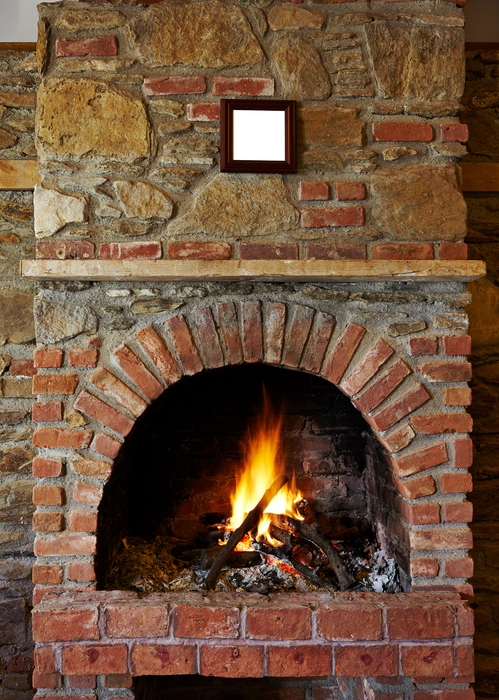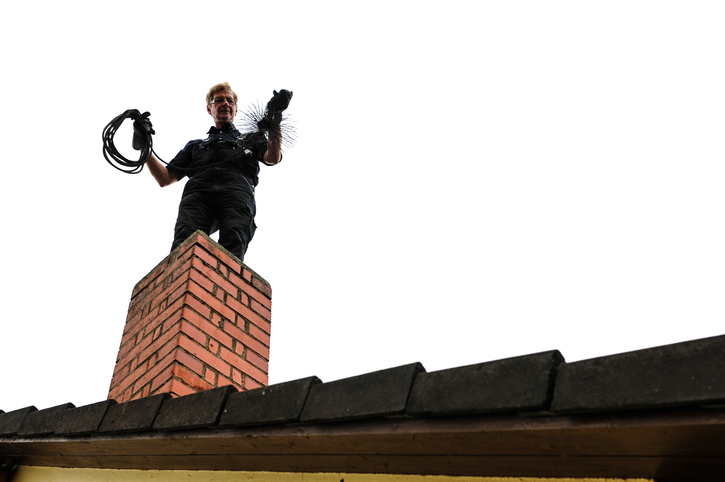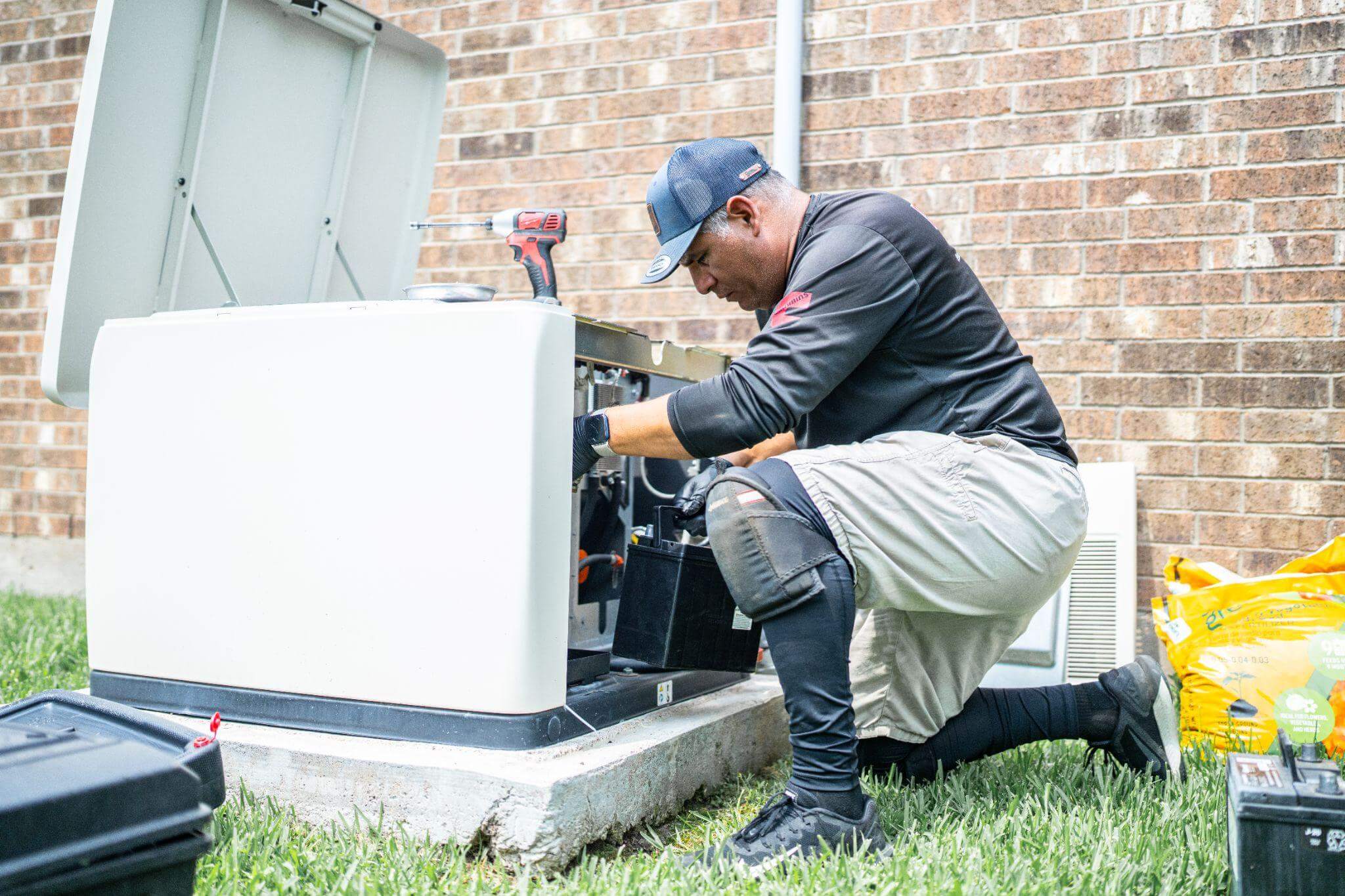Are you doing an HVAC project?
Modernize can pair you with three to four pros in your area, so you can compare options and save time and money.

Did you know that fireplace chimneys need to be cleaned and maintained just like any other piece of equipment in the home? Chimneys that aren’t properly maintained can malfunction in a variety of ways. After enough fire burning, creosote can build up on the inside of your chimney, and if it’s not cleaned, it can catch fire. Soot build-up in the chimney can also release dangerous carbon monoxide back into the house—and if this gas builds up, it can have lethal consequences. Plus, animals can get inside a chimney and build nests, preventing smoke from escaping out the chimney and potentially making it easy for pests to invade your home.
Because of the way chimneys are constructed, though, it’s almost impossible for a homeowner to clean it without professional help. Not only are special tools needed to clean away the soot that might be adhering to the chimney liner, but because chimneys are often cleaned from the top down, they require someone to climb up on the highest part of a roof. If you’re not skilled in scaling ladders and maintaining balance, you run the risk falling, or worse.
That’s where chimney sweeps come in. These professionals are specially trained in maneuvering on high rooftops, as well as in techniques to clear ash and soot away from the chimney, smoke ducts, flue pipes, and the fireplace itself.
What Does the Chimney Sweep Do?
In most cases, the chimney sweep will cover the fireplace with a tarp to prevent soot and ash from spraying into the house during cleaning. Then the tech will go up on the roof and, using long rods and brushes, sweep the inside of the chimney from the top down. Once the flue has been cleaned, the tech will go back inside the house and use a high-powered vacuum to suck up any soot that has been dislodged. If the roof can’t be accessed, the entire cleaning can be done from inside.

How Often Should the Chimney Be Swept?
How often a chimney should be swept depends on how much the fireplace is used, the type of fireplace, and even the kind of wood that is being burned. Wood that is dry and burns hot, like oak, will produce less soot than wood that is wet or still full of sap, or a soft wood like pine. Wood stoves need to be cleaned more often than a fireplace because most homeowners use wood stoves as a heating source, and they use them more frequently.
Find the Right Contractor for Your HVAC Project
Whether you’re ready to begin your project now or need some expert advice, our network of contractors are here to help. With a few simple questions, we’ll find the best local professionals for you
The National Fire Protection Association recommends that chimneys be inspected annually. Schedule your inspection for late summer or early fall before the fireplace starts getting used a lot. Chimneys should also be inspected before purchasing a new home, and cleaned or repaired before moving in. Even if creosote hasn’t built up in the chimney, it’s possible that animals have gotten in and built nests, so it’s better to start every wood-burning season knowing the chimney is clear and properly functioning.
What to Look for When Hiring a Chimney Sweep
The Chimney Institute of America recommends that homeowners ask a few key questions when determining who to hire to clean their chimney. First, ask how long the company has been in business and if they offer current references. When checking references, you’ll want to see if they’ve demonstrated prompt and courteous service, whether the company cleaned up any mess it made, and how well the service was performed. It’s also wise to verify that the company carries valid business liability insurance to protect your home and furnishings in the event of carelessness or an accident.
Ideally, the chimney sweep or company should be certified in safety techniques, as well. The Chimney Safety Institute of America makes it easy to find safety-certified sweeps and technicians here.
What Kind of Repairs Might a Chimney Need?
Chimneys are made of metal and/or masonry, neither of which is indestructible. Water, fire, normal wear and tear, frequent use, lack of use, and acts of nature can all take their toll on a chimney. For example, a few years ago, a mild earthquake in Maryland, Virginia, and the District of Columbia cracked or dislodged several chimneys. An intense storm called a “derecho” sent big tree limbs crashing against chimneys, as well. In some cases, chimney caps and animal guards may need to be replaced. And over time, masonry can wear away and metal chimney liners can erode.
An annual inspection can reveal how serious problems in a chimney are and what repairs need to be made. Like any home renovation, it is always a good idea to get a couple of opinions and estimates for a job, especially if it involves something major like replacing the lining of the chimney inside, or rebuilding the exterior of the chimney.
Now that you know what steps to take to keep your chimney clean and safe, it’s time to sit back and enjoy for a winter full of cozy nights by the fireplace!
Find the Right Contractor for Your HVAC Project
Whether you’re ready to begin your project now or need some expert advice, our network of contractors are here to help. With a few simple questions, we’ll find the best local professionals for you
Reviews from Real Homeowners
Welcome to Homeowner Resources! We are the Modernize blog. Modernize pairs more than 3 million homeowners a year with pre-vetted contractors in their area. This blog started because we believe homeowners should know everything about their homes, from how their HVAC works to which front door colors they might love. On Homeowner Resources, you can find information on every part of your home, right down to how you can negotiate with contractors to get the best price. Here's more about the blog.
Need a contractor? Learn more about how Modernize finds the right pro for you.


